Traditionally, every piece of German engineering I’ve come across has ended up being a love+hate relationship for me. They are so ingenious in their design, so laden with technological goodies that I can’t help but be enamored with their promise and potential.
And then I use the damned things.
Fascination soon gives way to puzzlement, and sometimes, weeping and gnashing of teeth. Slowly, surely, I am left with the distinct impression that they’re honestly trying to discourage me from using some of those marvelous features. Why else would they make them so !#&$@% difficult to use?
And so, bit-by-bit, my bubbly joy is penetrated with shards of loathing. Before long, I’ve utterly had it. And that’s when it hits… Schadenfreude. Well played my German brethren, well played.
In the end, what I am left with is a conflicted me, an agonized version of myself that is hopelessly in love with the best features of said gear, yet tormented by its eccentricities.
The Violectric HPA V220 is proud to carry on this tradition.
In comparison to the V200, the V220 features:
As it turns out, and as we’ll see below, not significantly changing the amp stage was single best decision they could have made.
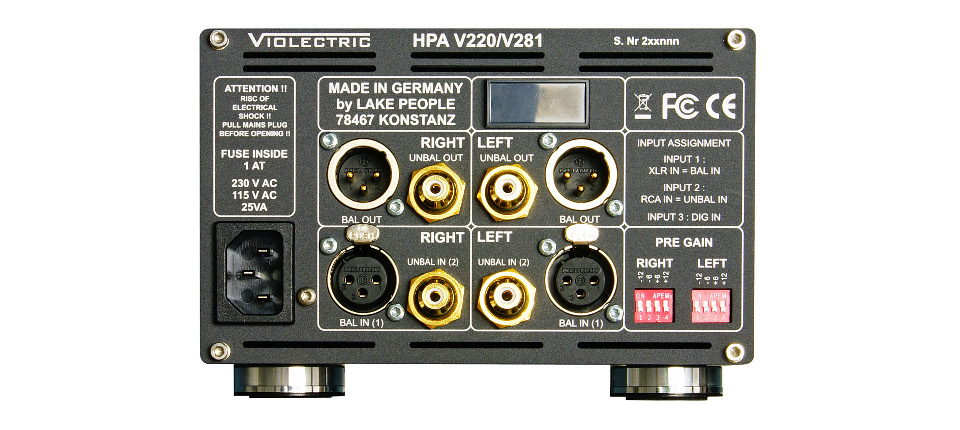
Optional Upgrades
For a base price of $1,399.95, you’ll receive the stock HPA V220 as described above. But like its bigger brother – the balanced-output V281 – the V220 is customizable to a healthy extent.
Built-In DAC Options
If you’re willing pay just a little bit more – a paltry sum of only $239.95 – Violectric offers up to six different on-board DAC options for your gratification. All six DAC options listed below are PCM only, sorry DSD devotees.
As you can see, there are plenty of digital input options to choose from. But here’s the kicker, you can only have one input method at a time. Please remember to choose wisely. Recognizing that most headphone enthusiasts are into digital audio, and probably use USB, Violectric wisely outfitted our review unit with a 24/192 USB DAC.
Volume Control
In addition to the optional DAC, Violectric also offers a volume control upgrade path.
The standard volume control utilizes a 41-detent ALPS RK27 pot. Moving up from that, you can opt for the “Volume Control Upgrade Level 1” option. That’s a completely non-descript way of saying that you’ll receive a motorized version of that same RK27, and a remote control with which to operate it, for an additional $289.95.
Honestly, they should have just called it a “Remote Volume Control”. Instead, they list it as “1st Volume Control Option: Motorized RK27 together with remote input/output control,” which makes the remote control sound like an afterthought. This makes little sense to me, because the remote control is the entire point of this upgrade.
Again, to ensure that we were able to experience the V220 in all its glory, Violectric included the Volume Control Upgrade Level 1 option in our review unit.
As it turns out, the remote control unit is a bit overkill. It’s a One-For-All DirecTV-compatible universal remote control. It has many, many buttons… most of which will lead very unfulfilling lives, but will require periodic cleaning nonetheless.
Supposedly, there will also be a Volume Control Upgrade Level 2 option available soon. This will feature the same motorized RK27, and an accompanying remote. But this time, the aforementioned RK27 will control a 128-step relay (0.75 dB per step). Unfortunately, since this Volume Control Upgrade Level 2 option is currently unavailable, our review unit did not come with it. Boo.
If you haven’t been keeping track, our particular review unit is now valued at $1,929.85.
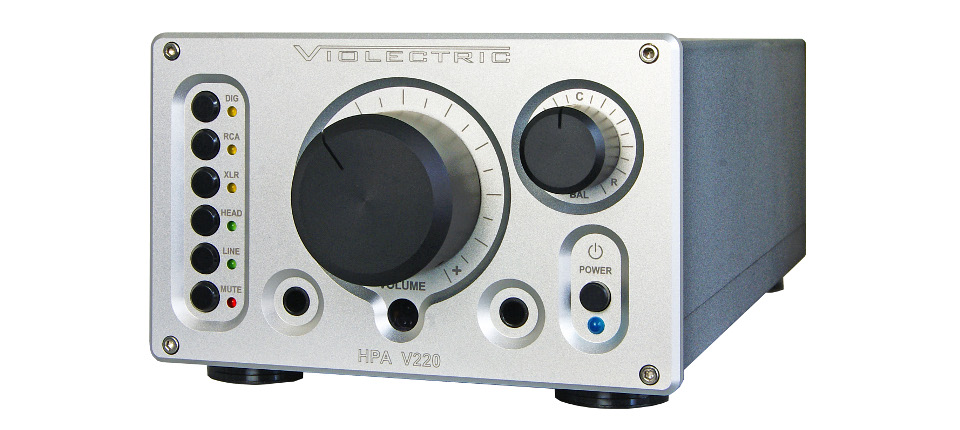
The powder-coated chassis components are precisely formed and fitted to exact tolerances, resulting in a fit and finish that is hard to fault. Separate pieces come together to offer the kind of structural integrity one would typically expect from unibody construction, which is not an easy thing to do.
The faceplate – available in both silver and black – is impeccably machined, with each cut and bevel being decisive and purposeful. It is then bead-blasted for lasting protection from scratches, scrapes, and fingerprints. Miniature hex bolts complete the job by securely holding the front fascia to the chassis.
Yes, I am very pleased with the V220’s construction and build quality. It leaves me confidant that it will stand up to use, abuse, and the passage of time.
Design-wise, the unit is VERY German. It is a piece of industrial machinery with no pretensions of being anything else. As such, it’s rather Spartan with a lack of adornment. Taken as a whole, it does have a hint of an aesthetic about it, but one that is wholly reminiscent of function dominating form, like that of a diagnostic console.
The look of it is something to be appreciated, but not necessarily admired. So while the V220 strives to pay homage to tube amps in terms of sound signature, tube amp fashionistas need not apply.
Input selection couldn’t be simpler. Just hit the DIG[ital], RCA or XLR button to specify which input you want to use, and you’re good to go. The LED indicators, which are color-coded by function, are just the right brightness. They are perfectly visible in ambient daylight, and not blindingly bright in darkness.
The ginormous volume knob is likewise appreciated. It’s easy to reach for, easy to grip, and very smooth in rotation. Below that nose of a knob, there is a generously proportioned IR lens. This enables the remote control to better remotely control the unit, as long as there is even the slightest degree of line-of-sight.
To either side of the IR lens, we find two 1/4″ TRS jacks that will allow us to plug in two headphones simultaneously. Oh joy! Okay, no, not really. I’m not trying to single out Violectric here, so please let the following serve as a public service announcement to all headphone amp manufacturers:
Generally speaking, us headphone enthusiasts don’t own multiples of the same headphone. It is far more likely that we have different headphones with varying characteristics. I mention this because giving us two jacks WITHOUT independent volume/gain control is like engineering in a splitter, and then passing those costs on to us. Yes Studio Six, I’m looking at you there.
Now we move to the back of the unit for the pre-gain settings. Oh boy.
Let me begin by saying that I do not understand the German fascination with DIP switches (Lehmann, I’m very much looking at you here). I suppose it’s better than a bank of pins and a bag of jumpers, but surely there is a better way? At least the V220 has its DIP switches on the back of the unit, instead of Lehmann amps where I have to reach underneath, as if I’m fondling some audio genitalia.
In the case of the V220, there are two banks (one for each channel) of four switches, which allow you to specify one of five pre-gain settings (-12dB, -6dB, 0dB, +6dB and +12dB) for each channel. Halt! Achtung! The following four conditions apply:
“But Warren,” you say… “Why do you have to keep messing with the DIP switches at all? Violectric says that the 0dB setting (unity pre-gain) should be sufficient for most applications.”
Yes friends, I know they say that. But in practice, I have found that to not be the case. Sure, permanently leaving the DIP switches on any given setting will allow you to drive most headphones. But it may not be optimal. In my experience, the pre-gain settings do more than adjust gain. They also change the sound signature and presentation, sometimes significantly.
I would very much like it if the pre-gain settings were moved to the front of the unit, and governed by a dial that controlled a five-position switch regulating 10 pins. It can fit in the space currently occupied by the balance control knob. Speaking of the balance control knob, I wouldn’t mind seeing that go away.
Violectric notes that the “Balance control is provided to compensate moderate level differences between left and right channel. These may root in the recorded material itself, noticeable difference between left and right headphone system, or differences in the user’s individual hearing.” Right, I can kind of understand how that might seem logical, but it’s still relatively useless.
If there’s a channel imbalance in the original recording, that’s more or less how I would prefer to hear it. I may yearn for the occasional bit of crossfeed, but I’m not too keen on swinging the signal excessively in one direction or the other. If I have some messed up headphones, I should probably get my broken-ass headphones fixed (or replaced) instead of using an active circuitry based solution. And if my hearing is screwed up… ah, well, yes it’s useful to have a balance control in that situation. But hey, since that is owner-specific, and not likely to change much in day-to-day operation, how about making it a trimpot instead, and then re-locating it to the back of the unit?
And just like that, there is now room to put the pre-gain setting on the front! Yay!
Now, I would like to say one thing in favor of the balance control. To avoid crosstalk, Violectric implemented a balance control that only affects the right channel. That’s pretty smart, I do like that, even if I didn’t use the feature, at all, because again, relatively useless.
And finally, let’s chat about the remote for a bit. No ifs, ands, or buts here – I love the remote! I didn’t think I would, because it seemed like an unnecessary feature designed to further enable my indolent tendencies. But honestly, it did come in handy.
First, it allowed me to station the V220 farther than I normally would have, using the remote to control (almost) everything. I say almost, because the one thing the remote will not do is turn the unit on or off. Sigh. Secondly, not having to get up and reach for the volume control from track to track greatly enhanced my ability to just enjoy the music. Lastly… look, I like seeing the volume dial turn by itself okay? It’s like witchcraft, it’s just a thing with me and you don’t need to understand it.
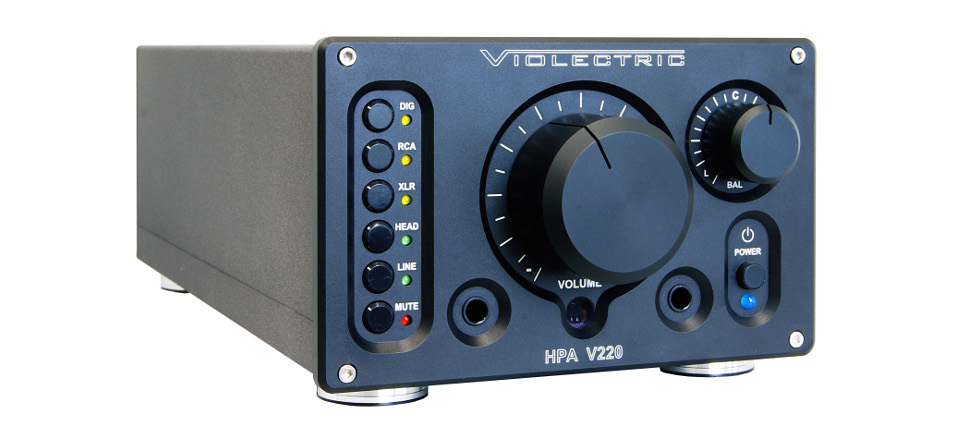
I believe that – aside from possessing an obvious love of music, and observing (or obeying) one’s personal budget – being an audiophile means putting sound quality first, above all other considerations. If I hold true to that personal mantra, then the Violectric V220 appeals directly to my inner audiophile in a way few other headphone amps do, despite any and all complaints I iterated above.
The V220’s overall signature is warm-neutral. While most tube amp aficionados would consider it just about right, fans of solid state amps will definitely find it warmer than normal. Mid-range and treble are admirably even-keeled and linear. So while I would call it warm, I hesitate to deem it dark. Detail (macro-detail in particular) is relatively unobscured and rendered faithfully.
Staging is sufficiently spacious, though not out-of-head by any stretch of the imagination. And imaging is precise if not slightly intimate due to the average-sized soundstage. In most cases, the noise floor was very low, resulting in impressively dark backgrounds. Only after plugging in an Ultimate Ears Reference Monitor (UERM) did I hear any background noise.
So that’s what the V220’s signature is like in the proverbial nutshell. Now before we delve into specific impressions, I would like to note two factors that will drastically affect one’s enjoyment of the V220: pre-gain settings and headphone pairings.
Setting The Proper Pre-Gain
If you intend to audition the Violectric V220, I highly advise you not overlook the pre-gain settings available to you. Please take the time necessary to find the optimal pre-gain setting for the headphones you wish to drive. You’ll be glad you did. Or alternatively, you’ll regret it if you don’t. Here are the optimal pre-gain settings (i.e. the pre-gain settings I favored most) when I did just that:
But when you throw a warm headphone at it, the results are somewhat less spectacular, euphemistically speaking. Again, let me be clear about this: do NOT pair the Violectric V220 with a warm or dark headphone. Just don’t. It’s a pretty awful. I know this, because the first headphone I decided to try out was a Sennheiser HD 650.
 At this time, I’d like to acquaint you with my personal contribution to our audiophile lexicon: Vaginal. I coined this, rather inadvertently, when I first heard the Sennheiser HD 650. It was warm, dark, wet, intimate and suffocating. It was, well, vaginal. Hey buddy, if you can come up with a more all-encompassing term for this sensation; feel free to let me know – I’m all ears.
At this time, I’d like to acquaint you with my personal contribution to our audiophile lexicon: Vaginal. I coined this, rather inadvertently, when I first heard the Sennheiser HD 650. It was warm, dark, wet, intimate and suffocating. It was, well, vaginal. Hey buddy, if you can come up with a more all-encompassing term for this sensation; feel free to let me know – I’m all ears.
The V220 dutifully lent its own warmth to the pairing. It then proceeded to evoke the HD 650’s innate vaginal qualities to a degree I have yet to experience anywhere else. Track after track, I was punished with a brutally warm and dark listening experience. The Beautiful South’s Sound of North America came through with severely rolled-off highs, splashy and indistinct upper mids, all wrapped in an oppressive warmth. Vaginal. Beck’s Morning Phase was reminiscent of an AM radio’s signature but with more pronounced bass. Again, vaginal. The Main Title from Apollo 13’s OST relented a bit with some very nice horns, but then pulled a Mr. Hyde with heavily veiled strings and a nearly total lack of air. Very vaginal. And The Trashcan Sinatras’s Should I Pray and Sarah Jarosz’s Ring Them Bells fared no better. Vaginal and vaginal.
I’ve come to accept it by now: my time with the V220 and HD 650 was an hour of my life that I will never get back. I will have to live with that fact. But it is my hope that my experiences above will spare you the regret that I now feel. I’m getting better, day-by-day. The flashbacks are fewer and far between now. I remain hopeful of a full recovery.
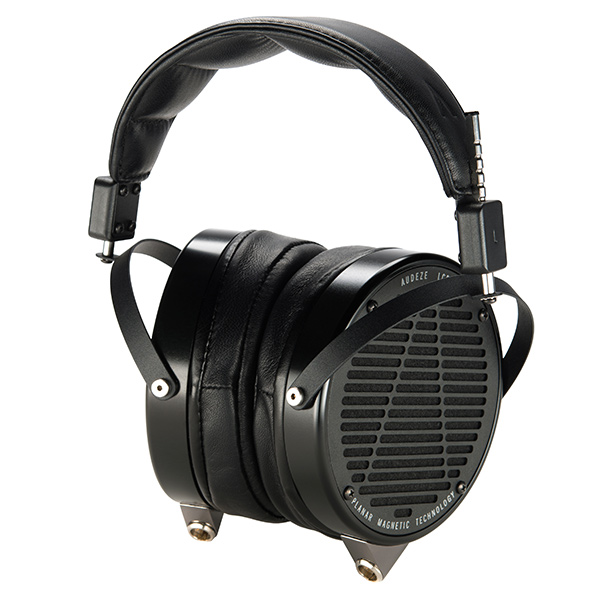 Crowning my head from the HD 650, I was happy to don my reference LCD-X instead. After making the appropriate pre-gain changes, I was rewarded with some much-needed instant relief. Everything I played was immediately more open, and far more detailed, with a natural bass presentation that stood in stark contrast to the HD 650.
Crowning my head from the HD 650, I was happy to don my reference LCD-X instead. After making the appropriate pre-gain changes, I was rewarded with some much-needed instant relief. Everything I played was immediately more open, and far more detailed, with a natural bass presentation that stood in stark contrast to the HD 650.
The V220 still contributed its own low-end emphasis to the mix… but it wasn’t the least bit offensive or unwelcome. The low-end emphasis manifested itself as increased dynamics for a swift and visceral punch when needed. The mids bloomed gently, like a flat meadow showing the first tender shoots of spring grass, rising up from the earth as little blades of lush detail. The highs were natural, natural, natural – balancing detail with smoothness to avoid even a hint of fatigue.
One notable track that highlights the synergy of a V220 and LCD-X is Alison Krauss’s “It Wouldn’t Have Made a Difference“. The V220’s excellent power output characteristics added a wonderful sense of presence, which resulted in a more lifelike listening experience. Imagine the even-keeled flatness of the LCD-X, sprinkled with the drops of detail one typically finds in an LCD-3, and that’s what it was like.
It was absolutely splendid to listen to.
 But one pairing where the V220 truly shined was that of the V220 and HE-5LE. This isn’t very surprising, as Violectric amps have, traditionally, made very short work of hard-to-drive cans. But auditioning this pairing, track after track, only reinforced my appreciation of Violectric’s ability to deliver gobs of clean and distortion-free power.
But one pairing where the V220 truly shined was that of the V220 and HE-5LE. This isn’t very surprising, as Violectric amps have, traditionally, made very short work of hard-to-drive cans. But auditioning this pairing, track after track, only reinforced my appreciation of Violectric’s ability to deliver gobs of clean and distortion-free power.
Returning to The Beautiful South’s The Sound Of North America, which suffered under the HD 650’s oppressive rule, I was finally rewarded with music. Right off the bat, the electric piano and organ came through with a wonderfully pure tonality. The mids, and vocals in particular, were incredibly vivid and textured. And the treble was clean, approaching HD 800 in cleanliness, but without glare or harshness.
In short, the V220 drove the HE-5LE beautifully, gracefully and with authority. And because of this, I wound up listening to this pairing more than any other, hour after hour, day after day. I will miss it.
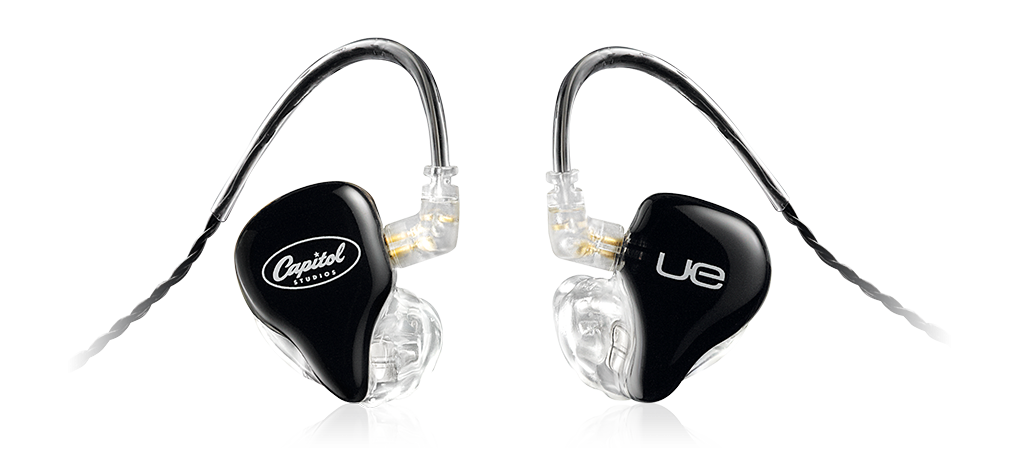 First, I’d like to point out that there is no practical reason why anyone would want to do this. Trying to drive IEMs with this beast of an amp is ridiculous overkill. I did it because I came across some impressions indicating that the V220 was absolutely dead quiet under all conditions. I felt those statements to be in exaggeration, and I was right.
First, I’d like to point out that there is no practical reason why anyone would want to do this. Trying to drive IEMs with this beast of an amp is ridiculous overkill. I did it because I came across some impressions indicating that the V220 was absolutely dead quiet under all conditions. I felt those statements to be in exaggeration, and I was right.
As soon as I plugged in the UERM, I was greeted with a strong hum, accompanied by a pervasive hiss. Pushing past the hum and hiss, I went ahead and auditioned Astrud Gilberto’s rendition of “Dindi”. The bass was incredibly thick, molasses thick. And there was quite a bit of distortion and noise that started in the mids, gradually increasing into a hot mess moving up the frequency range.
Again, there is no practical reason why one would use the V220 to drive IEMs, none whatsoever. As such, this set of impressions is not meant as a point of criticism against the V220. It was simply a fact-finding mission to debunk some of the nonsense being spread around about the V220’s noise floor.
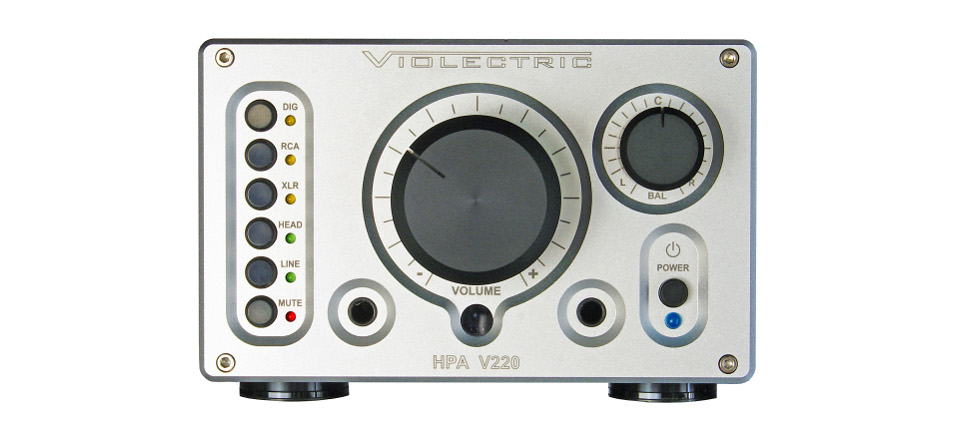
I can see how a case could be made for that judgment. The V220 is impressively low in background noise with most of the headphones I’ve tried, as long as you’re not using IEMs. There is a remarkable lack of distortion, again, as long as you’re not using IEMs. And the V220 pairs well with many reference headphones, particularly those known to be somewhat excitable in their treble presentation.
So why don’t I consider the V220 endgame? Because there are just too many little things about it that bother me. And taken in total, those little things add up.
Let’s take a moment to remember that our review unit, as configured, prices out at $1,929.85.
That includes a built-in DAC that I am not particularly fond of. I find it to be overly smooth, and far too laid back, to have it be the only DAC at my disposal. Even the CEntrance DACport LX that I inserted into the signal chain was able to cull forth more detail than the V220’s internal DAC. And of course, the Mytek Stereo 192-DSD DAC puts the V220’s built-in DAC to shame. Do I think the built-in DAC option is convenient? Yes, yes I do. Do I think it sounds good? No, I’m sorry, I don’t.
Of course, we can omit the built-in DAC. Doing so brings the price down to $1,689.90.
But that still includes the volume control upgrade (i.e. remote control). I would very much like to see a volume control option that utilizes the upcoming 128-step relay, but eschews the remote, and passes the resulting cost savings on to us. Don’t get me wrong, I like the remote, I do. But I’m just not sure it’s worth the upcharge. Do I think such an option will exist in the near future? No. My track record of wishing for things that don’t exist – and actually having those wishes fulfilled – is pretty dismal.
So now, by removing the volume control upgrade entirely, we are left with just the base unit – which prices out at $1,399.95.
And here’s where my pet peeves kick in. The selectable pre-gain is cool, but in it’s current DIP switch form, I find it to be a pain in the ass. I think the balance control is pretty useless. And as a dedicated headphone guy, I have little need for the V200’s preamp capabilities. In other words, I find most of the things that make the V220 a V220 to be of little consequence, and thus not worth the $500 increase over the previous generation.
Having said all that…
Okay that might be a little harsh. Instead, I will simply say that the V220 – as an amp – sounds quite good. If you are looking for a V200 with preamp capability, balance control and selectable pre-gain, give the HPA V220 a spin. It might be just what you’re looking for. If you don’t need any of that…
…Buy the HPA V200.
And then I use the damned things.
Fascination soon gives way to puzzlement, and sometimes, weeping and gnashing of teeth. Slowly, surely, I am left with the distinct impression that they’re honestly trying to discourage me from using some of those marvelous features. Why else would they make them so !#&$@% difficult to use?
And so, bit-by-bit, my bubbly joy is penetrated with shards of loathing. Before long, I’ve utterly had it. And that’s when it hits… Schadenfreude. Well played my German brethren, well played.
In the end, what I am left with is a conflicted me, an agonized version of myself that is hopelessly in love with the best features of said gear, yet tormented by its eccentricities.
The Violectric HPA V220 is proud to carry on this tradition.
Description & Specs
The HPA V220 (hereafter known simply as the V220) is a new and improved Violectric single-ended amp, based largely upon their venerable HPA V200. It’s been in development for about two years now, and is finally ready for the throngs of Violectric devotees worldwide.In comparison to the V200, the V220 features:
- large toroidal transformers to facilitate increased output power;
- pre-amplifier capability;
- user-selectable pre-gain settings;
- balance control;
- additional protection circuitry for safeguarding both the V220 itself as well as your headphones;
- an optional built-in DAC; and
- a variety of upgrade options to enhance convenience and usability.
As it turns out, and as we’ll see below, not significantly changing the amp stage was single best decision they could have made.

Specifications
| Inputs: | 2 x XLR female, balanced,2 x RCA, unbalanced1 x digital (Option) | ||||||||||||||||||||||||
| Max.input voltage: | + 21 dBu, Impedance 10k Ohms | ||||||||||||||||||||||||
| Input impedance: | 10k Ohms | ||||||||||||||||||||||||
| Line outputs: | 2 x XLR male, balanced2 x RCA unbalanced | ||||||||||||||||||||||||
| Nominal input sensitivity: | +6 dBu | ||||||||||||||||||||||||
| Amplifier gain: | +8 dB | ||||||||||||||||||||||||
| PRE-GAIN: | -12/-6/0/+6/+12 dB | ||||||||||||||||||||||||
| Frequency range: | 5 Hz … 70 kHz (-0.5 dB)3 Hz … 200 kHz (-3 dB) | ||||||||||||||||||||||||
| Output impedance: | 0.1 Ohm | ||||||||||||||||||||||||
| Damping factor (Load 50 Ohm): | 500 | ||||||||||||||||||||||||
| Dynamic range: | > 129 dB (A-wtd) | ||||||||||||||||||||||||
| Noise: | < -101 dBu (A-wtd) | ||||||||||||||||||||||||
| THD+N (1kHz/2x10V/100R=1W): | < -102 dB / < 0,00079% | ||||||||||||||||||||||||
| THD+N (1kHz/2x4V/32R=0.5W): | < -100 dB / < 0.001% | ||||||||||||||||||||||||
| Crosstalk: | -105 dB (1 kHz) / -103 dB (15 kHz) | ||||||||||||||||||||||||
| Headphone outputs: | 2 x 6.3 mm (1/4″) Phone Jack | ||||||||||||||||||||||||
| Max. output level (1 kHz / < 0.1% THD+N; both channels driven): |
|
||||||||||||||||||||||||
| Power supply: | 230V AC / 115 VAC max. 40 VA | ||||||||||||||||||||||||
| Case, Front, Back: | Aluminum | ||||||||||||||||||||||||
| Dimensions (W x H x D): | 165 x 114 x 310 mm / 6.5 x 5 x 12 inches. Two stacked “standard sized” Violectric units will have exactly the same height as one V220 or V281. Only the depth will differ. |
Optional Upgrades
For a base price of $1,399.95, you’ll receive the stock HPA V220 as described above. But like its bigger brother – the balanced-output V281 – the V220 is customizable to a healthy extent.
Built-In DAC Options
If you’re willing pay just a little bit more – a paltry sum of only $239.95 – Violectric offers up to six different on-board DAC options for your gratification. All six DAC options listed below are PCM only, sorry DSD devotees.
| COAX | 24/96 | Coaxial S/P-DIF input | Supported sample rates: 28kHz-108kHz |
| COAX | 24/192 | Coaxial S/P-DIF input | Supported sample rates: 28kHz-210kHz |
| OPTO | 24/96 | Optical (Toslink) input | Supported sample rates: 28kHz-108kHz |
| OPTO | 24/192 | Optical (Toslink) input | Supported sample rates: 28kHz-210kHz |
| USB | 24/96 | USB 1.1/2.0 | Supported sample rates: 28kHz-210kHzSupported sample rates: 44.1kHz, 48kHz and 96kHz (88.2kHz not supported) |
| USB | 24/192 | USB 2.0 | Supported sample rates: 44.1kHz, 48kHz, 88.2kHz, 96kHz, 176.4kHz and 192kHz |
As you can see, there are plenty of digital input options to choose from. But here’s the kicker, you can only have one input method at a time. Please remember to choose wisely. Recognizing that most headphone enthusiasts are into digital audio, and probably use USB, Violectric wisely outfitted our review unit with a 24/192 USB DAC.
Volume Control
In addition to the optional DAC, Violectric also offers a volume control upgrade path.
The standard volume control utilizes a 41-detent ALPS RK27 pot. Moving up from that, you can opt for the “Volume Control Upgrade Level 1” option. That’s a completely non-descript way of saying that you’ll receive a motorized version of that same RK27, and a remote control with which to operate it, for an additional $289.95.
Honestly, they should have just called it a “Remote Volume Control”. Instead, they list it as “1st Volume Control Option: Motorized RK27 together with remote input/output control,” which makes the remote control sound like an afterthought. This makes little sense to me, because the remote control is the entire point of this upgrade.
Again, to ensure that we were able to experience the V220 in all its glory, Violectric included the Volume Control Upgrade Level 1 option in our review unit.
As it turns out, the remote control unit is a bit overkill. It’s a One-For-All DirecTV-compatible universal remote control. It has many, many buttons… most of which will lead very unfulfilling lives, but will require periodic cleaning nonetheless.
Supposedly, there will also be a Volume Control Upgrade Level 2 option available soon. This will feature the same motorized RK27, and an accompanying remote. But this time, the aforementioned RK27 will control a 128-step relay (0.75 dB per step). Unfortunately, since this Volume Control Upgrade Level 2 option is currently unavailable, our review unit did not come with it. Boo.
If you haven’t been keeping track, our particular review unit is now valued at $1,929.85.

Build Quality & Design
In terms of build quality, the V220 evokes every German engineering cliché one would care to apply.The powder-coated chassis components are precisely formed and fitted to exact tolerances, resulting in a fit and finish that is hard to fault. Separate pieces come together to offer the kind of structural integrity one would typically expect from unibody construction, which is not an easy thing to do.
The faceplate – available in both silver and black – is impeccably machined, with each cut and bevel being decisive and purposeful. It is then bead-blasted for lasting protection from scratches, scrapes, and fingerprints. Miniature hex bolts complete the job by securely holding the front fascia to the chassis.
Yes, I am very pleased with the V220’s construction and build quality. It leaves me confidant that it will stand up to use, abuse, and the passage of time.
Design-wise, the unit is VERY German. It is a piece of industrial machinery with no pretensions of being anything else. As such, it’s rather Spartan with a lack of adornment. Taken as a whole, it does have a hint of an aesthetic about it, but one that is wholly reminiscent of function dominating form, like that of a diagnostic console.
The look of it is something to be appreciated, but not necessarily admired. So while the V220 strives to pay homage to tube amps in terms of sound signature, tube amp fashionistas need not apply.
Usability
Many of the V220’s basic functions are very intuitive and easy to use.Input selection couldn’t be simpler. Just hit the DIG[ital], RCA or XLR button to specify which input you want to use, and you’re good to go. The LED indicators, which are color-coded by function, are just the right brightness. They are perfectly visible in ambient daylight, and not blindingly bright in darkness.
The ginormous volume knob is likewise appreciated. It’s easy to reach for, easy to grip, and very smooth in rotation. Below that nose of a knob, there is a generously proportioned IR lens. This enables the remote control to better remotely control the unit, as long as there is even the slightest degree of line-of-sight.
To either side of the IR lens, we find two 1/4″ TRS jacks that will allow us to plug in two headphones simultaneously. Oh joy! Okay, no, not really. I’m not trying to single out Violectric here, so please let the following serve as a public service announcement to all headphone amp manufacturers:
Generally speaking, us headphone enthusiasts don’t own multiples of the same headphone. It is far more likely that we have different headphones with varying characteristics. I mention this because giving us two jacks WITHOUT independent volume/gain control is like engineering in a splitter, and then passing those costs on to us. Yes Studio Six, I’m looking at you there.
Now we move to the back of the unit for the pre-gain settings. Oh boy.
Let me begin by saying that I do not understand the German fascination with DIP switches (Lehmann, I’m very much looking at you here). I suppose it’s better than a bank of pins and a bag of jumpers, but surely there is a better way? At least the V220 has its DIP switches on the back of the unit, instead of Lehmann amps where I have to reach underneath, as if I’m fondling some audio genitalia.
In the case of the V220, there are two banks (one for each channel) of four switches, which allow you to specify one of five pre-gain settings (-12dB, -6dB, 0dB, +6dB and +12dB) for each channel. Halt! Achtung! The following four conditions apply:
- The unit must be switched off before making any pre-gain setting changes.
- The volume control must be set to minimum when making pre-gain setting changes.
- The settings for the left and right channel must be identical.
- Never have more than one switch in the on position.
“But Warren,” you say… “Why do you have to keep messing with the DIP switches at all? Violectric says that the 0dB setting (unity pre-gain) should be sufficient for most applications.”
Yes friends, I know they say that. But in practice, I have found that to not be the case. Sure, permanently leaving the DIP switches on any given setting will allow you to drive most headphones. But it may not be optimal. In my experience, the pre-gain settings do more than adjust gain. They also change the sound signature and presentation, sometimes significantly.
I would very much like it if the pre-gain settings were moved to the front of the unit, and governed by a dial that controlled a five-position switch regulating 10 pins. It can fit in the space currently occupied by the balance control knob. Speaking of the balance control knob, I wouldn’t mind seeing that go away.
Violectric notes that the “Balance control is provided to compensate moderate level differences between left and right channel. These may root in the recorded material itself, noticeable difference between left and right headphone system, or differences in the user’s individual hearing.” Right, I can kind of understand how that might seem logical, but it’s still relatively useless.
If there’s a channel imbalance in the original recording, that’s more or less how I would prefer to hear it. I may yearn for the occasional bit of crossfeed, but I’m not too keen on swinging the signal excessively in one direction or the other. If I have some messed up headphones, I should probably get my broken-ass headphones fixed (or replaced) instead of using an active circuitry based solution. And if my hearing is screwed up… ah, well, yes it’s useful to have a balance control in that situation. But hey, since that is owner-specific, and not likely to change much in day-to-day operation, how about making it a trimpot instead, and then re-locating it to the back of the unit?
And just like that, there is now room to put the pre-gain setting on the front! Yay!
Now, I would like to say one thing in favor of the balance control. To avoid crosstalk, Violectric implemented a balance control that only affects the right channel. That’s pretty smart, I do like that, even if I didn’t use the feature, at all, because again, relatively useless.
And finally, let’s chat about the remote for a bit. No ifs, ands, or buts here – I love the remote! I didn’t think I would, because it seemed like an unnecessary feature designed to further enable my indolent tendencies. But honestly, it did come in handy.
First, it allowed me to station the V220 farther than I normally would have, using the remote to control (almost) everything. I say almost, because the one thing the remote will not do is turn the unit on or off. Sigh. Secondly, not having to get up and reach for the volume control from track to track greatly enhanced my ability to just enjoy the music. Lastly… look, I like seeing the volume dial turn by itself okay? It’s like witchcraft, it’s just a thing with me and you don’t need to understand it.

Sound Quality
A few weeks ago, a Facebook friend of mine asked: “What does it means to be an audiophile?”I believe that – aside from possessing an obvious love of music, and observing (or obeying) one’s personal budget – being an audiophile means putting sound quality first, above all other considerations. If I hold true to that personal mantra, then the Violectric V220 appeals directly to my inner audiophile in a way few other headphone amps do, despite any and all complaints I iterated above.
The V220’s overall signature is warm-neutral. While most tube amp aficionados would consider it just about right, fans of solid state amps will definitely find it warmer than normal. Mid-range and treble are admirably even-keeled and linear. So while I would call it warm, I hesitate to deem it dark. Detail (macro-detail in particular) is relatively unobscured and rendered faithfully.
Staging is sufficiently spacious, though not out-of-head by any stretch of the imagination. And imaging is precise if not slightly intimate due to the average-sized soundstage. In most cases, the noise floor was very low, resulting in impressively dark backgrounds. Only after plugging in an Ultimate Ears Reference Monitor (UERM) did I hear any background noise.
So that’s what the V220’s signature is like in the proverbial nutshell. Now before we delve into specific impressions, I would like to note two factors that will drastically affect one’s enjoyment of the V220: pre-gain settings and headphone pairings.
Setting The Proper Pre-Gain
If you intend to audition the Violectric V220, I highly advise you not overlook the pre-gain settings available to you. Please take the time necessary to find the optimal pre-gain setting for the headphones you wish to drive. You’ll be glad you did. Or alternatively, you’ll regret it if you don’t. Here are the optimal pre-gain settings (i.e. the pre-gain settings I favored most) when I did just that:
| Headphone | IdealPre-Gain | Notes |
| Sennheiser HD 650 | 0 dB | If I’m to be honest, all of the pre-gain settings I tried were a total disaster. This is simply not a good headphone to pair with the V220. |
| Audeze LCD-X | -6 dB | Honestly, I wish there was a -9 dB option, because neither the -6 dB setting nor the -12 dB setting were perfect. A -9 dB midpoint between them might have been perfect, but we’ll never know. |
| HiFiMAN HE-5LE | +6 dB | Again, I long for an midpoint setting of +9 dB, to balance out the virtues between +6 dB and +12 dB. But in the absence of such a setting, +6 dB will have to do. |
| Ultimate Ears Reference Monitor | -12 dB | Duh. |
Headphone Selection
And I said to a guy, I said ‘tell me, what is it about cocaine that makes it so wonderful?’The Violectric V220 spends about a third of its time lending its own warm and intimate voicing to the signal. The other two-thirds of the time, it amplifies the innate characteristics of whichever headphone you have chosen to pair it. When properly paired with a complementary headphone – and by this I mean something on the brighter end of the spectrum like an HD 800, HE-560, etc. – this is not a problem.
And the guy said ‘well, it intensifies your personality.’
And I said ‘yes, but what if you’re an asshole?’
-Bill Cosby
But when you throw a warm headphone at it, the results are somewhat less spectacular, euphemistically speaking. Again, let me be clear about this: do NOT pair the Violectric V220 with a warm or dark headphone. Just don’t. It’s a pretty awful. I know this, because the first headphone I decided to try out was a Sennheiser HD 650.
Impressions
Associated Equipment:- CEntrance DACport LX
- CEntrance Reserve Series Interconnect (1/4″ TRS to Stereo RCA)
- Mytek Digital Stereo192-DSD DAC (Mastering version)
- Nordost Blue Heaven USB Cable
- Nordost Heimdall2 RCA Interconnect
- Nordost Blue Heaven Power Cord
- Denon D7000
- Sennheiser HD 650
- Audeze LCD-X (w/WyWires Red Series cable)
- HiFiMAN HE-5LE
- Ultimate Ears Reference Monitor
Sennheiser HD 650
 At this time, I’d like to acquaint you with my personal contribution to our audiophile lexicon: Vaginal. I coined this, rather inadvertently, when I first heard the Sennheiser HD 650. It was warm, dark, wet, intimate and suffocating. It was, well, vaginal. Hey buddy, if you can come up with a more all-encompassing term for this sensation; feel free to let me know – I’m all ears.
At this time, I’d like to acquaint you with my personal contribution to our audiophile lexicon: Vaginal. I coined this, rather inadvertently, when I first heard the Sennheiser HD 650. It was warm, dark, wet, intimate and suffocating. It was, well, vaginal. Hey buddy, if you can come up with a more all-encompassing term for this sensation; feel free to let me know – I’m all ears.
The V220 dutifully lent its own warmth to the pairing. It then proceeded to evoke the HD 650’s innate vaginal qualities to a degree I have yet to experience anywhere else. Track after track, I was punished with a brutally warm and dark listening experience. The Beautiful South’s Sound of North America came through with severely rolled-off highs, splashy and indistinct upper mids, all wrapped in an oppressive warmth. Vaginal. Beck’s Morning Phase was reminiscent of an AM radio’s signature but with more pronounced bass. Again, vaginal. The Main Title from Apollo 13’s OST relented a bit with some very nice horns, but then pulled a Mr. Hyde with heavily veiled strings and a nearly total lack of air. Very vaginal. And The Trashcan Sinatras’s Should I Pray and Sarah Jarosz’s Ring Them Bells fared no better. Vaginal and vaginal.
I’ve come to accept it by now: my time with the V220 and HD 650 was an hour of my life that I will never get back. I will have to live with that fact. But it is my hope that my experiences above will spare you the regret that I now feel. I’m getting better, day-by-day. The flashbacks are fewer and far between now. I remain hopeful of a full recovery.
Audeze LCD-X
 Crowning my head from the HD 650, I was happy to don my reference LCD-X instead. After making the appropriate pre-gain changes, I was rewarded with some much-needed instant relief. Everything I played was immediately more open, and far more detailed, with a natural bass presentation that stood in stark contrast to the HD 650.
Crowning my head from the HD 650, I was happy to don my reference LCD-X instead. After making the appropriate pre-gain changes, I was rewarded with some much-needed instant relief. Everything I played was immediately more open, and far more detailed, with a natural bass presentation that stood in stark contrast to the HD 650.
The V220 still contributed its own low-end emphasis to the mix… but it wasn’t the least bit offensive or unwelcome. The low-end emphasis manifested itself as increased dynamics for a swift and visceral punch when needed. The mids bloomed gently, like a flat meadow showing the first tender shoots of spring grass, rising up from the earth as little blades of lush detail. The highs were natural, natural, natural – balancing detail with smoothness to avoid even a hint of fatigue.
One notable track that highlights the synergy of a V220 and LCD-X is Alison Krauss’s “It Wouldn’t Have Made a Difference“. The V220’s excellent power output characteristics added a wonderful sense of presence, which resulted in a more lifelike listening experience. Imagine the even-keeled flatness of the LCD-X, sprinkled with the drops of detail one typically finds in an LCD-3, and that’s what it was like.
It was absolutely splendid to listen to.
HiFiMAN HE-5LE
 But one pairing where the V220 truly shined was that of the V220 and HE-5LE. This isn’t very surprising, as Violectric amps have, traditionally, made very short work of hard-to-drive cans. But auditioning this pairing, track after track, only reinforced my appreciation of Violectric’s ability to deliver gobs of clean and distortion-free power.
But one pairing where the V220 truly shined was that of the V220 and HE-5LE. This isn’t very surprising, as Violectric amps have, traditionally, made very short work of hard-to-drive cans. But auditioning this pairing, track after track, only reinforced my appreciation of Violectric’s ability to deliver gobs of clean and distortion-free power.
Returning to The Beautiful South’s The Sound Of North America, which suffered under the HD 650’s oppressive rule, I was finally rewarded with music. Right off the bat, the electric piano and organ came through with a wonderfully pure tonality. The mids, and vocals in particular, were incredibly vivid and textured. And the treble was clean, approaching HD 800 in cleanliness, but without glare or harshness.
In short, the V220 drove the HE-5LE beautifully, gracefully and with authority. And because of this, I wound up listening to this pairing more than any other, hour after hour, day after day. I will miss it.
Ultimate Ears Reference Monitor (UERM)
 First, I’d like to point out that there is no practical reason why anyone would want to do this. Trying to drive IEMs with this beast of an amp is ridiculous overkill. I did it because I came across some impressions indicating that the V220 was absolutely dead quiet under all conditions. I felt those statements to be in exaggeration, and I was right.
First, I’d like to point out that there is no practical reason why anyone would want to do this. Trying to drive IEMs with this beast of an amp is ridiculous overkill. I did it because I came across some impressions indicating that the V220 was absolutely dead quiet under all conditions. I felt those statements to be in exaggeration, and I was right.
As soon as I plugged in the UERM, I was greeted with a strong hum, accompanied by a pervasive hiss. Pushing past the hum and hiss, I went ahead and auditioned Astrud Gilberto’s rendition of “Dindi”. The bass was incredibly thick, molasses thick. And there was quite a bit of distortion and noise that started in the mids, gradually increasing into a hot mess moving up the frequency range.
Again, there is no practical reason why one would use the V220 to drive IEMs, none whatsoever. As such, this set of impressions is not meant as a point of criticism against the V220. It was simply a fact-finding mission to debunk some of the nonsense being spread around about the V220’s noise floor.

Concerns
Over the course of the past month or two, I’ve been hearing the term endgame thrown around regarding Violectric’s new offerings.I can see how a case could be made for that judgment. The V220 is impressively low in background noise with most of the headphones I’ve tried, as long as you’re not using IEMs. There is a remarkable lack of distortion, again, as long as you’re not using IEMs. And the V220 pairs well with many reference headphones, particularly those known to be somewhat excitable in their treble presentation.
So why don’t I consider the V220 endgame? Because there are just too many little things about it that bother me. And taken in total, those little things add up.
Let’s take a moment to remember that our review unit, as configured, prices out at $1,929.85.
That includes a built-in DAC that I am not particularly fond of. I find it to be overly smooth, and far too laid back, to have it be the only DAC at my disposal. Even the CEntrance DACport LX that I inserted into the signal chain was able to cull forth more detail than the V220’s internal DAC. And of course, the Mytek Stereo 192-DSD DAC puts the V220’s built-in DAC to shame. Do I think the built-in DAC option is convenient? Yes, yes I do. Do I think it sounds good? No, I’m sorry, I don’t.
Of course, we can omit the built-in DAC. Doing so brings the price down to $1,689.90.
But that still includes the volume control upgrade (i.e. remote control). I would very much like to see a volume control option that utilizes the upcoming 128-step relay, but eschews the remote, and passes the resulting cost savings on to us. Don’t get me wrong, I like the remote, I do. But I’m just not sure it’s worth the upcharge. Do I think such an option will exist in the near future? No. My track record of wishing for things that don’t exist – and actually having those wishes fulfilled – is pretty dismal.
So now, by removing the volume control upgrade entirely, we are left with just the base unit – which prices out at $1,399.95.
And here’s where my pet peeves kick in. The selectable pre-gain is cool, but in it’s current DIP switch form, I find it to be a pain in the ass. I think the balance control is pretty useless. And as a dedicated headphone guy, I have little need for the V200’s preamp capabilities. In other words, I find most of the things that make the V220 a V220 to be of little consequence, and thus not worth the $500 increase over the previous generation.
Having said all that…
Verdict
…Buy the HPA V200.Okay that might be a little harsh. Instead, I will simply say that the V220 – as an amp – sounds quite good. If you are looking for a V200 with preamp capability, balance control and selectable pre-gain, give the HPA V220 a spin. It might be just what you’re looking for. If you don’t need any of that…
…Buy the HPA V200.














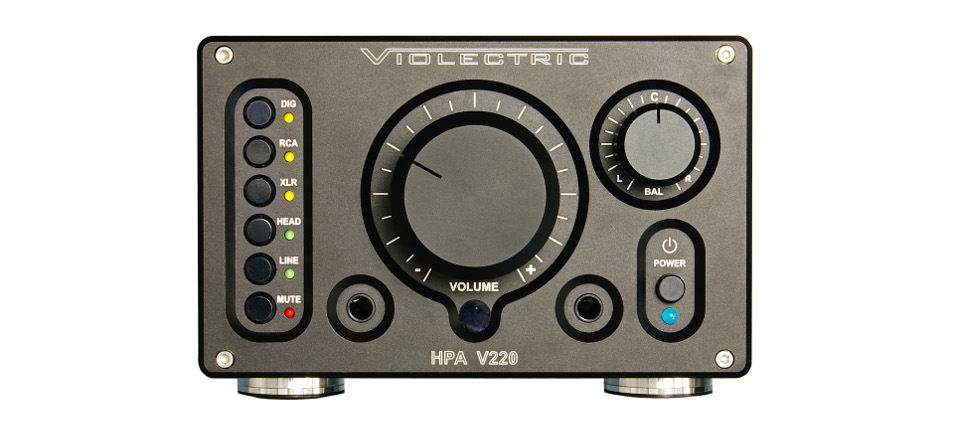
Reply
Reply
Reply
Reply
Reply
Reply
Reply
Reply
Reply
Reply
Reply
Want to join discussion?
Feel free to contribute!